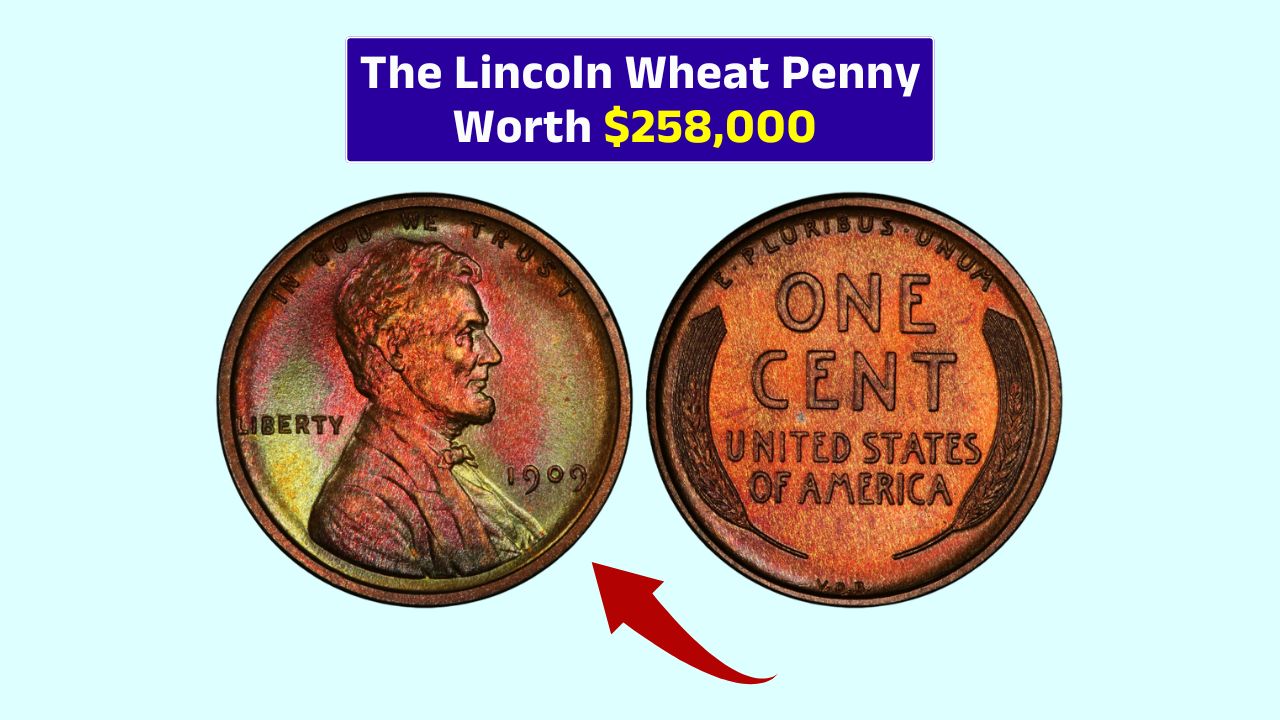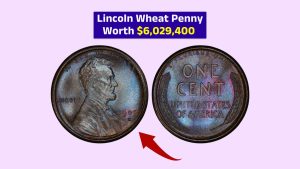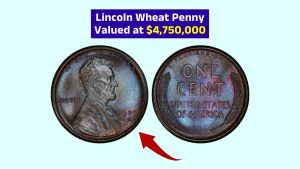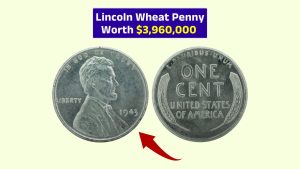Old coins can sometimes be worth a fortune—especially when they carry history, artistry, and rarity. One such coin is the 1909 VDB Matte Proof Lincoln cent. This isn’t your everyday old penny.
In fact, one example of this coin sold at auction for an incredible $258,000! But what exactly makes this small copper coin so valuable? Let’s take a closer look.
What Is the 1909 VDB Matte Proof Penny?
In 1909, the United States Mint launched a brand-new penny to honor the 100th birthday of President Abraham Lincoln. Designed by artist Victor David Brenner, the coin included his initials “VDB” at the bottom of the reverse side.
While many 1909 Lincoln cents exist, only a very small number were made as special matte proof versions—coins created specifically for collectors with higher precision and finish.
These matte proofs aren’t shiny or mirror-like like modern proof coins. Instead, they have a soft, velvety texture and very sharp, square-edged rims. The details on these coins are exceptionally clear, with Lincoln’s profile and the wheat stalks on the back appearing almost sculpted.
Only a few hundred of these matte proofs with the VDB initials were ever struck, making them incredibly rare today.
Why Is It So Valuable?
The 1909 VDB Matte Proof cent is one of the rarest Lincoln pennies for several reasons.
First, it’s from the very first year of the Lincoln cent series. Second, it has the initials “VDB” on the back, which were later removed due to public complaints. That makes this version even more collectible.
And finally, it’s a matte proof—something that wasn’t widely collected at the time, meaning fewer were preserved.
Add all of that together—first year, rare finish, historical design change—and you get a coin that’s in high demand among serious collectors. And when these coins show up in top condition, they can command huge prices.
The record sale of $258,000 happened because the coin was in nearly perfect mint state with deep red coloring and flawless matte surfaces.
How to Spot One
If you’re lucky enough to have an old 1909 penny and think it might be special, here are some key features to look for:
- The coin should have a matte, non-glossy finish, not the shiny look of modern proofs
- The rims will be square-edged and sharply defined
- You’ll see very fine detail in Lincoln’s beard, face, and the reverse wheat stalks
- The letters “V.D.B.” should appear clearly at the bottom center on the reverse side
Still, it’s not always easy to spot a real matte proof just by eye. Many regular 1909 pennies have been altered or polished to look like proofs. That’s why it’s crucial to have the coin authenticated by a trusted grading company like PCGS or NGC.
Why Collectors Love It
Beyond its value, collectors admire the 1909 VDB Matte Proof penny for its place in American history. It’s part of the very first batch of Lincoln cents ever made, and it represents an era of change in U.S. coin design.
The matte proof version adds an extra level of beauty and craftsmanship, appealing to those who appreciate both art and rarity.
Plus, it tells a story—the controversy around the designer’s initials, the shift in coin finishes, and the evolution of one of America’s longest-running coin series. Holding one of these pennies is like holding a little piece of numismatic heritage.
Significant
The 1909 VDB Matte Proof Lincoln cent isn’t just a rare coin—it’s a true collector’s prize. With its unique texture, low mintage, and historical significance, it stands out as one of the most desirable U.S. pennies ever made.
And with sales reaching over $250,000 at auction, it proves that even the smallest coins can carry incredible value.
If you ever come across a 1909 Lincoln penny with sharp details and a matte finish, don’t dismiss it. You just might be looking at a six-figure treasure.
FAQs
What does VDB stand for on the penny?
VDB are the initials of Victor David Brenner, the coin’s designer.
How many 1909 VDB Matte Proof pennies exist?
Only a few hundred were minted, and fewer survive in top condition.
How can I tell if my 1909 penny is a matte proof?
Look for a matte finish, sharp rims, and fine details, then get it graded.
Why are these coins so valuable?
They’re rare, historic, and in high demand among collectors.
What’s the highest price paid for this penny?
One example sold for $258,000 at auction in 2014.



